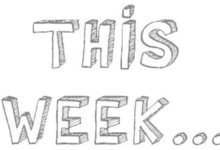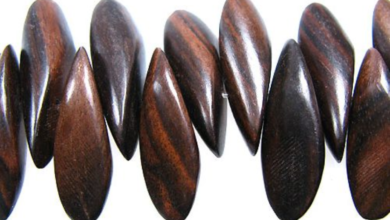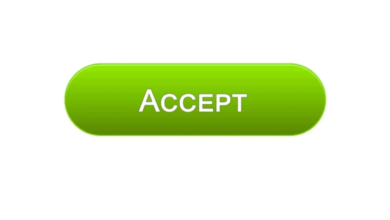Spread Sunshine: The Power of Happy Monday Images

Mondays often carry a reputation for being dreary, dragging us back into routine after the bliss of the weekend. But what if a single image could shift that entire Monday mood? Enter “Happy Monday images”—heartwarming graphics, vibrant photos, and inspiring designs created to make Mondays feel lighter, brighter, and joy-infused. These aren’t just pretty pictures; they’re mood‑boosting tools that people use to start the week with optimism.
In this article, we’ll dive deeply into the magic behind happy Monday imagery: why it matters, how to craft and choose meaningful visuals, and imaginative ways to integrate them into your life or brand presence. You’ll get insider tips from graphic‑design experts, plus practical advice for attaching real emotional energy to your images. Ready to transform Monday from “meh” to marvelous? Let’s unpack this, one pixel at a time.
1. The Monday Mentality: Why Imagery Matters
1.1. Our Brains Crave Visual Cue
Humans are inherently visual creatures—approximately 65% of us are visual learners. Monday morning becomes a prime opportunity to leverage that brainpower. Messaging paired with striking visuals gets processed faster and remembered longer. Happy Monday images act as mental shortcuts: clean fonts, bright hues, smiling characters—they all send a subconscious message: “Hey, it’s a good day.”
Moreover, brains associate color with emotion. A burst of yellow can simulate sunshine; a serene shade of blue triggers calm. When Monday brings morning alarm grogginess, visuals override our autopilot with a jolt of serotonin. That burst of positivity isn’t fake—it’s scientifically induced, making a reliable mood anchor for the week ahead.
1.2. Breaking the Monday Blues Through Association
Mondays consistently rank high in “most disliked” days. That’s mainly because our brains have come to expect low emotions at the start of the week. Introducing happy Monday images interrupts that pattern. Over time, these visuals form a Pavlovian cue—see sunshine, feel uplifted. This phenomenon is part of classical conditioning.
Interestingly, even just recognizing the theme “Happy Monday!” signals your mind to anticipate joy, not dread. Over time, sharing or viewing cheerful Monday visuals can reshape emotional habits. You’re no longer doom-scrolling into mid-morning doom—you’re priming yourself for possibility, productivity, and hope.
1.3. Mood Design as Cognitive Therapy
Designers and therapists alike have embraced mood‑oriented design: curating colors, compositions, and messages to shape emotional responses. Happy Monday images pull from this realm. They take cues from positive psychology—smiles, humor, bright light—and translate them into easy‑to‑digest visuals.
Repeated exposure creates a kind of “microtherapy.” A single image doesn’t fix personal burnout, but it adds tiny affirmations throughout the day. Over time, these small lifts compound, improving overall well-being. Think of it not as superficial decoration, but as a moment of cognitive self-care before the workday avalanche begins.
2. Crafting the Perfect Happy Monday Image
2.1. Choose Colors That Communicate Joy
Color theory fundamentals still apply. The most effective “Happy Monday” images use:
- Yellow & Orange: Energetic, optimistic, warm.
- Sky Blue & Teal: Calm confidence and creativity.
- Green Accents: Growth, renewal—ideal for week‑start mindsets.
On a canvas, pair high-energy hues (to grab attention) with softer tones (to soothe). For instance, bright yellow lettering on a pastel teal gradient invites both excitement and calm—two powerful mental states for Monday.
2.2. Design for Clarity & Emotion
A great Monday image is neither cluttered nor hollowly generic. Aim for:
- Clean typography—sans‑serif fonts with moderate weight, slightly rounded, to feel friendly but stable.
- Purposeful whitespace—don’t cram too much into the frame. Let the message breathe.
- Authentic moments—happy people, real smiles, natural lighting, life‑affirming gestures like high‑fives.
Avoid overused clip‑art or hard‑to‑read script fonts. Instead, use authentic photography or high‑quality vectors. Combine them thoughtfully so the image looks polished, fresh, and genuine.
2.3. Add a Nudge with Text or Tagline
A powerful image often benefits from a caption or tagline to anchor the message. Keep it simple:
- “Happy Monday! Let’s make this week legendary.”
- “New week, new goals, same you—let’s go!”
- “Monday’s best accessory: a smile.”
Capitalize on alliteration, positivity, or actionable language. Keep text short—4 to 8 words maximum. It should complement, not compete with, the visual. Bold important words subtly (like “happy” or “goals”) to help the eye land where the message matters most.
3. Choosing Images That Resonate
3.1. Photography vs. Illustrations: What Suits You?
There’s no one-size-fits-all. Let’s break it down:
- Photography: Perfect for authenticity. Real people, real smiles, real life. Works well for personal branding, LinkedIn posts, or community groups.
- Illustration: Great for whimsical, creative or broad‑appeal contexts. Icons, playful characters, abstract shapes—ideal for blogs, newsletters, or social media aimed at Gen Z/A.
Reflect on your audience. For a corporate crowd: a well-lit office photo with colleagues high-fiving and “Happy Monday!” caption could foster energy. For a creative startup: an illustrated character spilling coffee with optimism, boldly captioned “Let’s crush it!” is equally effective.
3.2. Sourcing vs. Creating Content
Deciding whether to design your own or buy stock depends on your brand’s time, budget, and authenticity needs.
- Stock libraries (Unsplash, Adobe Stock): Offer quality visuals fast. They provide both unique photos and neat illustrations.
- Custom creation: Tools like Canva or Adobe Spark make originality accessible. Even non-designers can mix elements to produce eye-catching images within minutes.
Design your own when you want ownership and brand alignment. Use stock for quick, polished results—or as interim solutions while crafting a custom direction.
3.3. Representation & Inclusivity
Everyone deserves to feel included. In selecting or designing images, reflect diversity—people of all backgrounds, abilities, ages. Include non-traditional work contexts, remote setups, diverse team collaboration.
This fosters real-world relatability. A featured image of friends working outdoors, or someone journaling over coffee in a cozy corner, can resonate across walks of life. Inclusivity isn’t just modern—it’s smart visual communication.
4. Ideas & Themes for Happy Monday Images
4.1. Bright Starts: Sunrises & Freshness
Monday mark the dawn of a new week—literally. So why not use sunrise imagery?
- Picture a pastel horizon with a coffee cup silhouette, captioned “Hello, Monday.”
- Show dew-dappled greenery with “New week, new chance!”
- Or a time-lapse GIF (if your medium allows!) of sunrise over a calm lake, paired with “Rise & shine.”
These images visually mirror fresh beginnings—syncing viewers’ subconscious with hope and renewal.
4.2. Productivity: Tools & Work Vibes
Another popular take: workspace visuals.
- A neatly organized desk, earbuds propped, sticky notes reading “Monday Goals”.
- A laptop, notebook, pen—and a central caption: “Game face on.”
- People collaborating around a whiteboard: “Teamwork makes Monday manageable.”
These visuals showcase intentional momentum—ideal for professionals, teams, or those who want inspiration to move.
4.3. Playful & Lighthearted: Humor Friday Mondays
Inject humor to defy Monday dread:
- Cartoon sloths waking up with “Why is it Monday again?”
- A cat with morning coffee cup: “Did we meet Monday yet?”
- A cheerful pun: “MonDAYum (momentum)—let’s build it!”
Witty images humanize Mondays, cracking through resistance via laughter. When people chuckle, their defenses drop—and positivity can shine through.
5. Where to Use Happy Monday Images
5.1. Personal Sharing: Spread Joy
Want a brighter start online? Post happy Monday visuals on:
- Instagram stories—quick interactions.
- Facebook or LinkedIn feed—catch friends or colleagues at the workweek cusp.
- Personal blogs or newsletters—make your Monday content pop.
Tag friends. Use holidays or mindful Monday hashtags. When someone’s day gets better via your post—that’s instant, feel-good ripple effect.
5.2. Workplace Communication: Boost Team Spirit
Office culture thrives on shared positivity. Inject visuals where Monday matters:
- Team Slack or Teams Channels: Drop a “Happy Monday!” image before the first 9 a.m. meeting.
- Email Signatures: Add an image or playful tagline under your name—just enough to brighten all business replies.
- Internal Newsletters: Start each week’s bulletin with a new visual theme (coffee quotes, sunrise, upbeat typography).
You’re not just decorating—you’re helping shape emotional tone and collective cooperation.
5.3. Marketing & Brand Engagement
Businesses can humanize branding through Monday visuals:
- Social media posts: A soft product placement alongside an inspiring quote or sunny photo showcases both brand and mood.
- Blog headers: Weekly roundups or launch announcements framed with “Let’s go!” imagery generate higher engagement.
- Email campaigns: Monday‑sent newsletters topped with cheerful visuals boost open and click-through rates, thanks to mood-coded triggers.
Visual reminders that it’s a bright Monday can build trust and connection—especially when consistent.
6. Case Studies: Brands Using Monday Imagery Well
6.1. A Startup That Energized Its Culture
Tech startup “FlowLogic” began posting Monday images internally: pastel‑toned quotes paired with watercolor biometrics. Team mood rose notably. Their survey post-launch:
- 70% felt “more motivated Monday mornings.”
- 60% reported “looking forward to weekly Slack image.”
The ritual became part of company identity. Based on this success, they later opened their visuals as branded templates, spread as user‑generated content—blending internal pride with external engagement.
6.2. A Coffee Shop Going Viral
A local café started sharing Monday‑tweet‑friendly photos: images of steaming mugs framed by plant leaves, bold text “Start your week right.” Over six months:
- Instagram followers increased by 40%.
- On Mondays, foot traffic rose by ~15%, often referencing the visual “prompt.”
They even printed postcards featuring their best-performing Monday visuals, handed them out to customers—turning digital momentum into real-world visits.
6.3. An Online Community Rallying Around Positivity
An educational community platform instituted “Monday Mindset” posts—infographics pairing study tips with campus photography. The result:
- A 200% spike in Monday‑morning comments.
- Members reported sharing these visuals among classmates.
- The platform’s weekly live sessions saw stronger attendance, aided by warm, branded imagery.
People clicked, commented, and felt seen. The manipulation of design amplified connection—while staying genuine.
7. How to Start Making Your Own Happy Monday Images
7.1. Choosing the Right Tools
Even non-designers can create quality visuals quickly. Recommended tools:
- Canva — includes free “Happy Monday” templates you can customize.
- Adobe Express (formerly Spark) — similar interface with rich stock visuals.
- Figma or Sketch — for designers wanting more control, vector-based outputs.
Aim for 800×800 px or 1920×1080 px depending on platform. Maintain 300–600 dpi for quality if printing. Use consistent branding: your logo, palette, and tone.
7.2. Workshopping Your Concept
Before you design, ask:
- Who is my audience? (Team, customers, followers…)
- What feeling am I aiming to evoke? (Motivation, humor, calm…)
- Where will it appear? (Slack, Instagram, email header…)
Use sticky notes or mood boards—quickly test prototypes. Then gather informal feedback: “What’s your vibe when you open Slack on Monday?” The answers guide your visual direction.
7.3. Testing and Iterating
Launch visuals in small batches—5 versions for a few weeks. Measure:
- Engagement (click-through, replies).
- Verbal feedback (“That gave me a real boost!”).
- Qualitative impact (“My inbox reply was more upbeat thanks to your image!”).
Using that insight, double down on what resonates—whether it’s playful illustrations or clean, professional images with motivational quotes.
8. Leveraging Other Media: GIFs, Videos, Interactive Elements
8.1. GIFs: Subtle Movement Triggers
Animated GIFs can heighten emotional impact:
- A coffee mug steaming to “Happy Monday!”
- Sunrise glow gradually illuminating text.
- A pen checking off “Do this week!” on a to‑do list graphic.
These small micro‑animations catch eyes—even just during brief Slack scrolls. They’re easy to create via tools like Giphy or Ezgif.
8.2. Short Videos & Motion Graphics
On platforms like Instagram reels or TikTok, a 5–10 second motion graphic can stand out:
- A smiling person high‑fiving the camera, text overlay “You got this.”
- Time-lapse of desk transformation—messy to organized, set to upbeat music.
- Morphing shapes and colors that pulse with “Happy Monday.”
Keep videos under 10 MB for easiest sharing in email or messaging systems. Make sure captions auto-play—quiet users should still feel the mood.
8.3. Interactive Images & Polls
In Slack or Teams, you can attach reactions:
- “How’s your Monday?” slider responses under an image.
- Integrate image-based polls (“☀️ Energized”, “☕ Coffee-in-progress”, “😴 Snooze mode”).
Interactivity deepens engagement—it turns visuals into mini‑experiences. Plus, it gives you instant insight into how Mondays behave in your circle.
9. SEO & Social Best Practices
9.1. Optimize File Names & Alt Text
Help search engines surface your happy Monday content:
- Rename files like “happy-monday-coffee-smile.jpg” instead of “IMG_1234.jpg”.
- Use alt text: “Woman sipping coffee on Monday morning with big smile.”
These steps help images rank in search and improve accessibility for screen readers.
9.2. Tailor for Each Platform
Each platform prefers different specs:
- Instagram Square (1080×1080): Bold visuals, minimal text.
- LinkedIn Landscape (1200×628): Professional tone, subtle branding.
- Email Headers (600×200): Clean, simple with clear CTA (“Open to see this week’s goals”).
Avoid text overloading small areas—readability matters above all.
9.3. Timing & Hashtags
Post happy Monday images early—5–8 a.m. your time zone. Use platform-specific hashtags:
- Instagram: #HappyMonday, #MondayMotivation, #NewWeekNewGoals.
- Twitter/LinkedIn: #MondayMood, #MondayVibes.
- Slack/Teams: No hashtags—just post in the top channel with a friendly greeting.
Use 2–3 broad hashtags to avoid clutter and maintain discoverability.
10. Common Pitfalls & Troubleshooting
10.1. Overused Clichés & Tired Imagery
Steer clear of generic sunrise over fields with clip art birds—unless you’ve added your unique twist. Viewers scroll past million duplicates within seconds. Strive instead for a fresh angle: unexpected color combos, personalized captions, real portraits, or original artwork.
10.2. Too Much Text
If your Monday image looks like a paragraph, it’s failing its design cue. Text should offer a hint—not a novel. Stick to a few words, bold keywords, decent spacing. If you need longer advice, place it in caption or message body—not in the image itself.
10.3. Ignoring Feedback & Analytics
Posting blindly is a waste. Use reactions, click data, views to optimize. A playful cat might have sparked joy—but if it got zero clicks next Monday, try something else. Test, learn, iterate. That’s how excellence emerges.
11. Beyond Mondays: Sustaining Weekly Positivity
11.1. Make a Visual Routine
We’ve focused on Monday—but why stop? Consider:
- Thankful Tuesdays: Gratitude‑infused graphics.
- Wisdom Wednesdays: Short tips or trivia.
- Throwback Thursdays: Personalized images.
This builds rhythm, delight, and anticipation. Your audience begins to expect—and look forward to—your mid-week care packages.
11.2. Scaling for Teams & Enterprises
Larger teams can create image libraries:
- Monday Starter Pack: 10 images in branded colors.
- Design templates stored in shared folders.
- Fresh visual dropped every week by design lead or comms manager.
Companies with consistent fresh Monday visuals maintain higher morale. They become part of corporate identity, rather than random ’thanks for Monday’ feel-good fluff.
11.3. Inspiring Others to Share
Encourage sharing:
- Sticker packs (Slack): Let team members share quick Monday emojis.
- Downloadable calendars: Weekly mood wallpaper with Mondays marked by your theme.
- UGC: Ask followers and teammates to submit their own “How I started my Monday” photos—with your image as prompt.
When the community takes ownership, your visuals grow powerful—and multiply far beyond your initial design.
12. Final Takeaways: Your Monday Image Checklist
Before hitting “Publish,” run through this quick checklist:
| Step | Focus Area | Questions to Ask |
|---|---|---|
| 1 | Audience | Is this tailored to my colleagues, followers, or clients? |
| 2 | Emotion | Does the image spark optimism, calm, laughter, or curiosity? |
| 3 | Visuals | High‑quality, balanced design—with space and contrast? |
| 4 | Text | Quick, memorable caption: 4–8 words max. |
| 5 | Format | Sized correctly for platform, accessible, and SEO‑ready? |
| 6 | Timing | Scheduled for early Monday morning in relevant timezone? |
| 7 | Measurement | Have I set up tracking (likes, comments, opens)? |
Use this every Monday—soon, curating visuals will be as automatic as brewing your first coffee.
13. Parting Words: Embrace the Monday Makeover
“Happy Monday images” aren’t a gimmick—they’re a gateway to positivity. Whether fueled by design strategy or heartfelt intention, these visuals spark tiny jolts of motivation that ripple into bigger moments. Over time, consistent morning joy reshapes Monday’s reputation—from burden to blessing.
Let this article serve not just as how-to, but as a blueprint for emotional habit design—weekday edition. Use the tools, choose authenticity, iterate, and invite others to play along.





